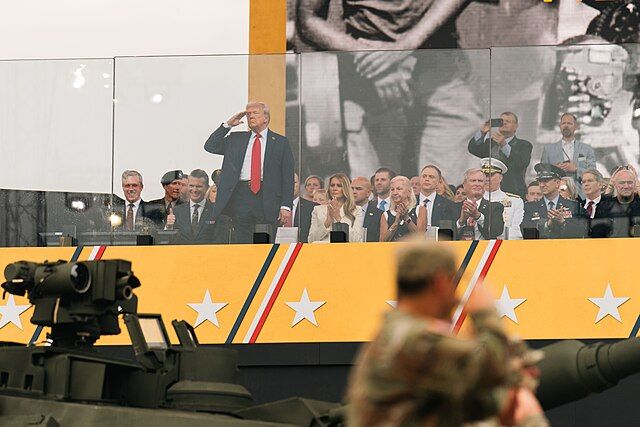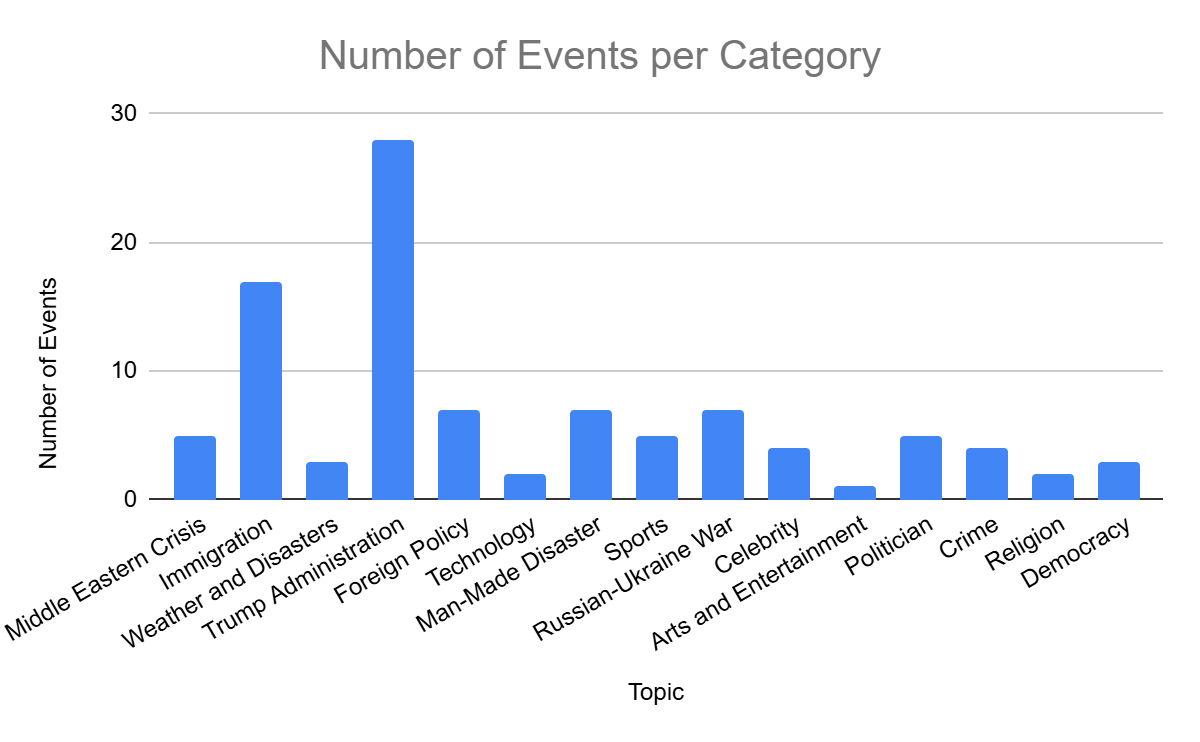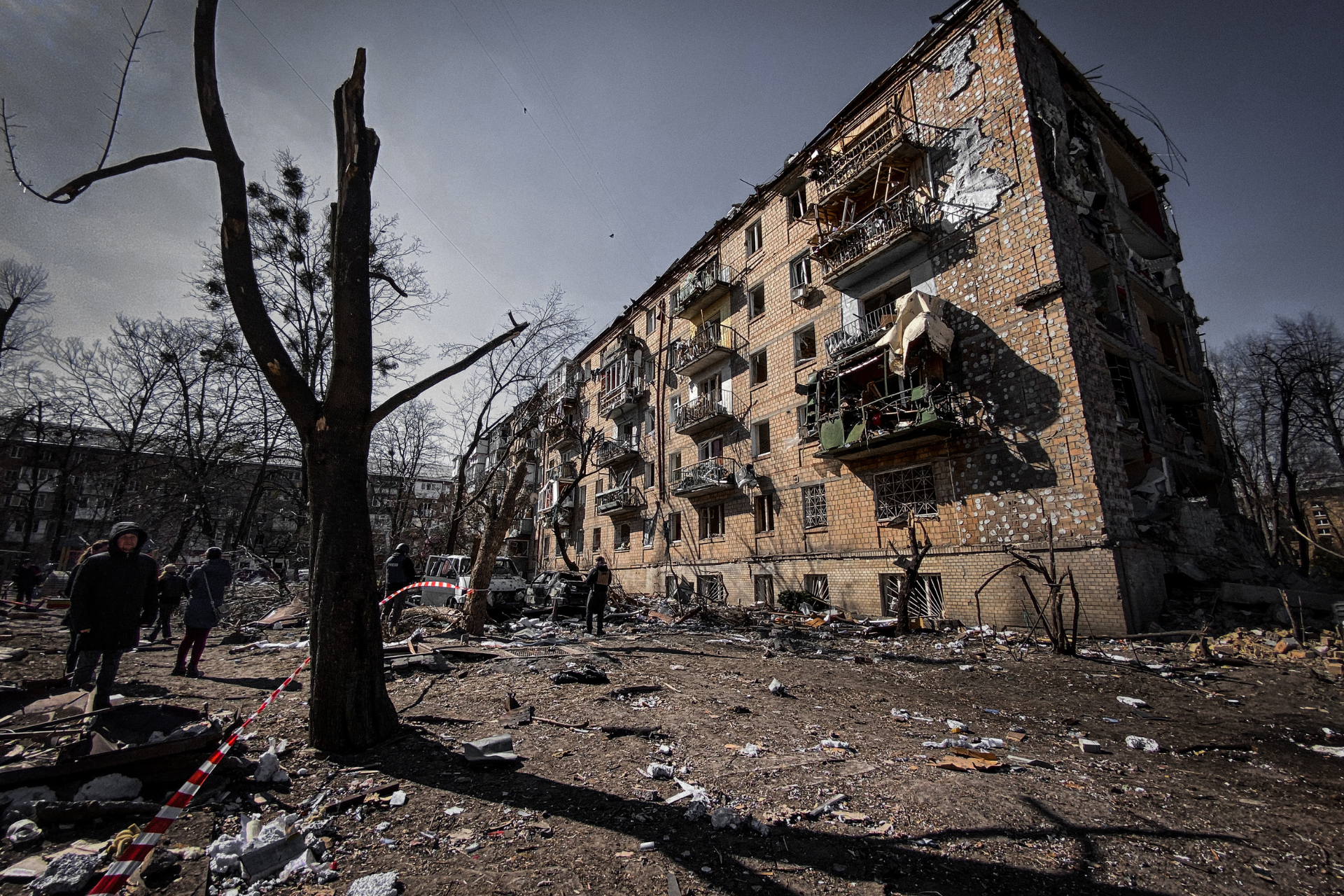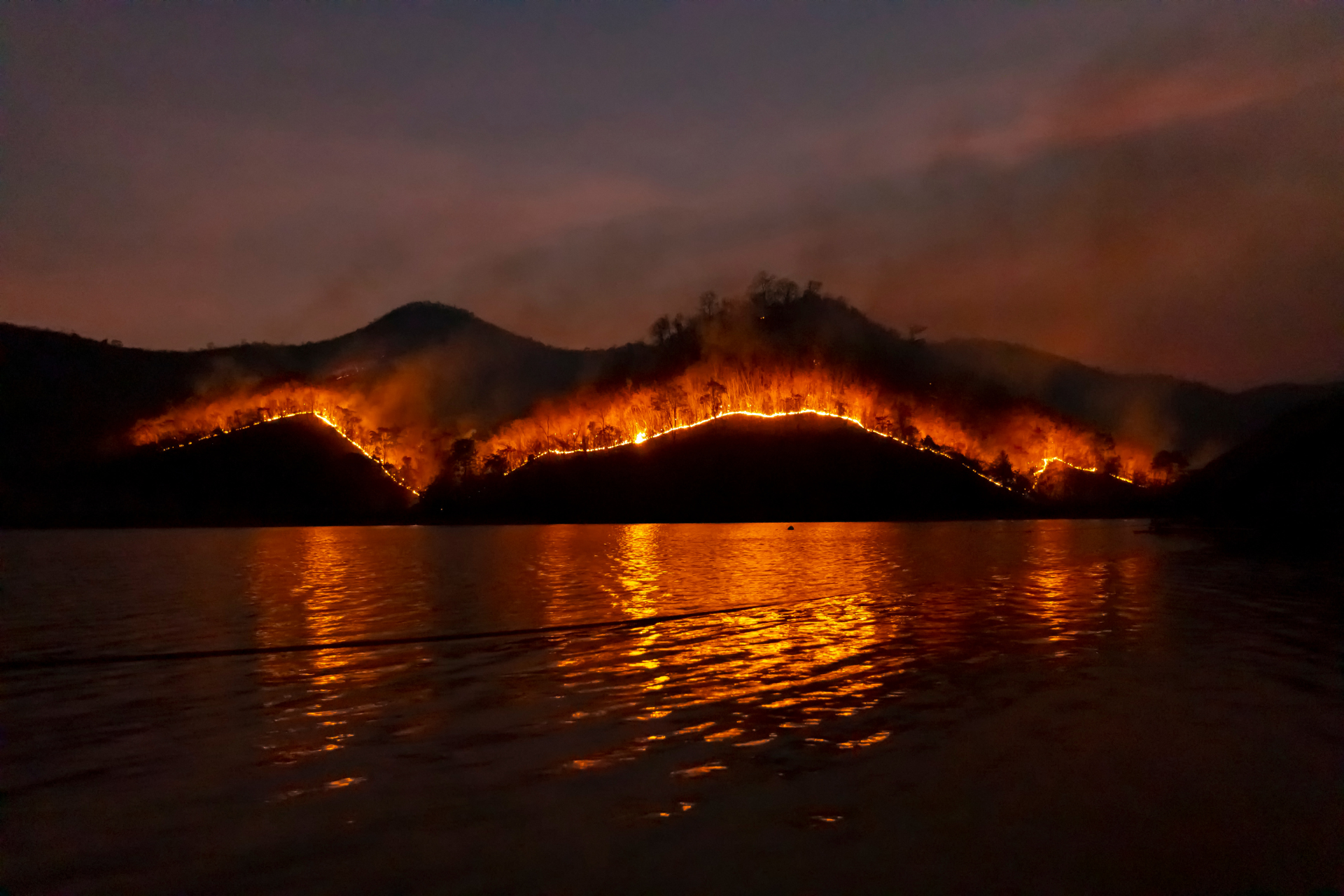Urban Disasters Through the Lens of the Mainstream Media
By Delphine Gardiner
Since the start of the wildfires in the Los Angeles neighborhood of Pacific Palisades on January 7th, over a hundred thousand Southern California residents have been displaced. Since the containment of the Palisades Fire, Eaton fire, and Hughes, effects are focused on recovery and rebuilding.
The Media Bias Detector tracked coverage of the fire, which falls under the Weather and Natural Disaster topic (part of the broader Disaster category).
This was coverage of all articles that fall under the Disaster category (highlighted in orange) since the beginning of this year in comparison to all other news categories:
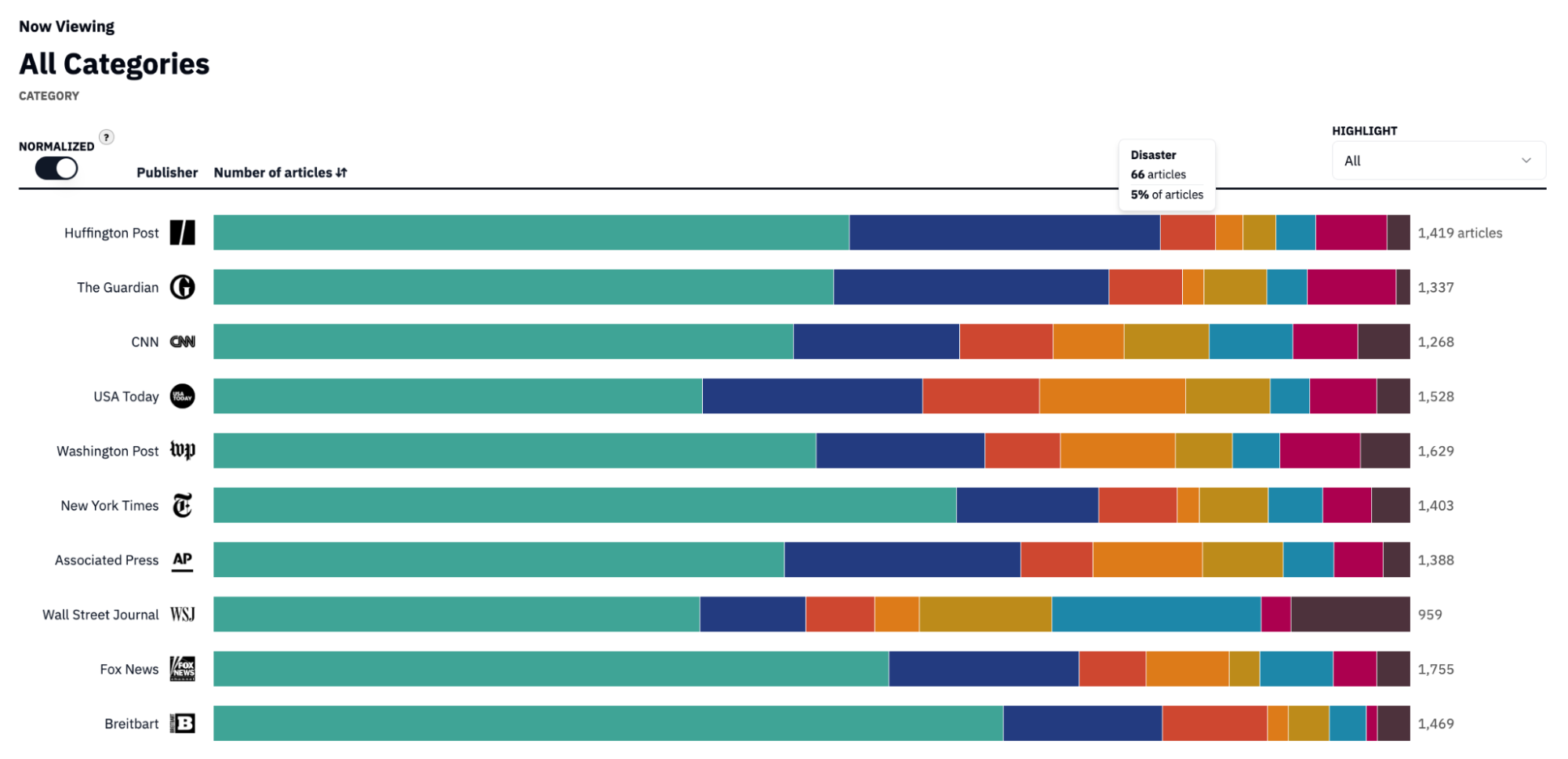
Out of all the 14,155 articles published by the top ten publishers since the first day of 2025, 955 were written on disasters (comprising 6.74% of total articles).
And this is the comparison of Weather and Natural Disaster coverage among the top ten publishers from 1/1/25-1//29/25:
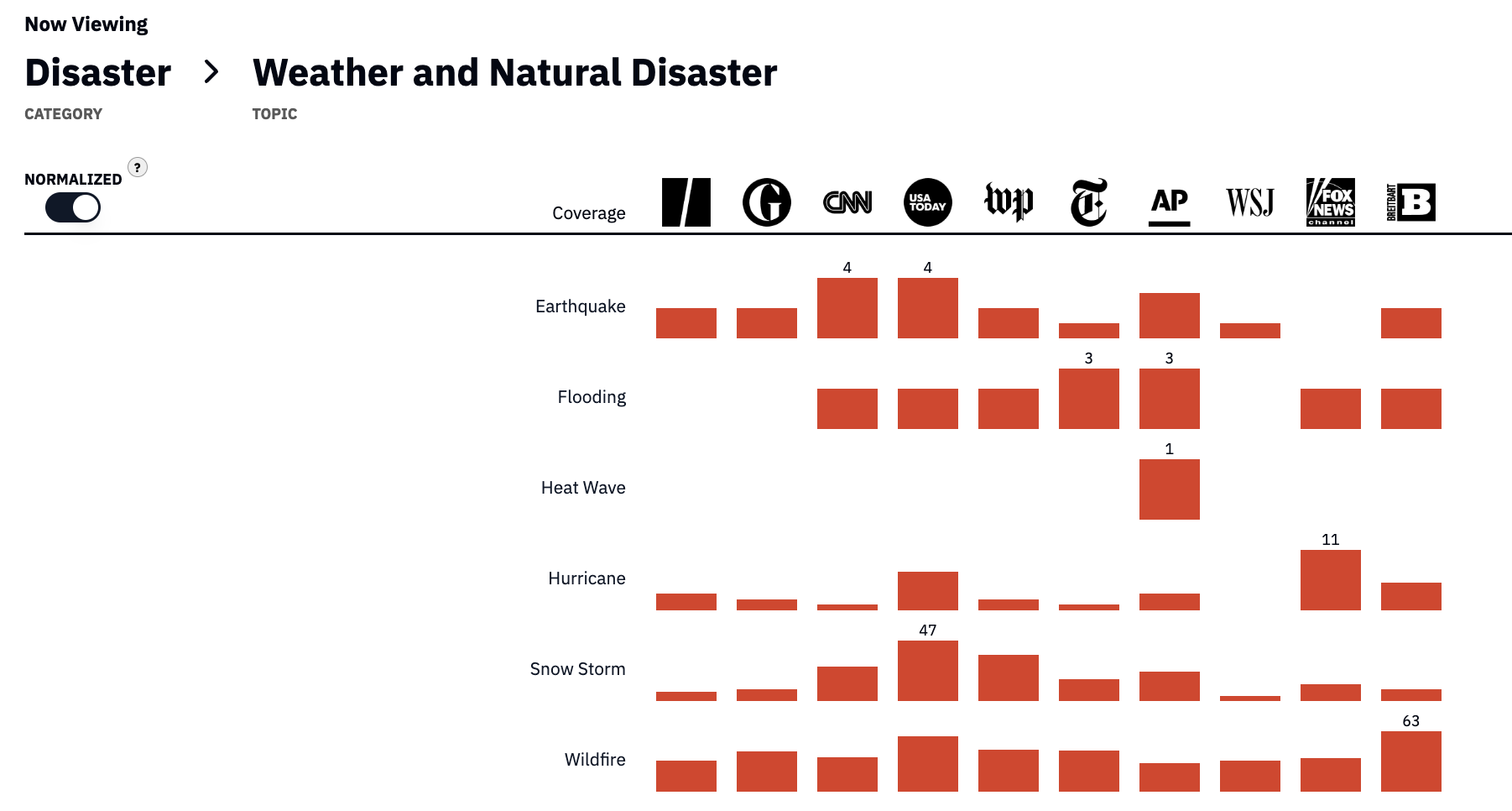
The bottom row of the above image shows a comparison of Wildfire coverage between the ten publishers that the media bias detector tracks, with Breitbart publishing the most articles (63) on the fires and Associated Press with the least number of articles (30) overall.
The Media Bias Detector also tracks the most covered news stories under the Events page. The LA Wildfires were first listed under the Events section on 1/8/2025:
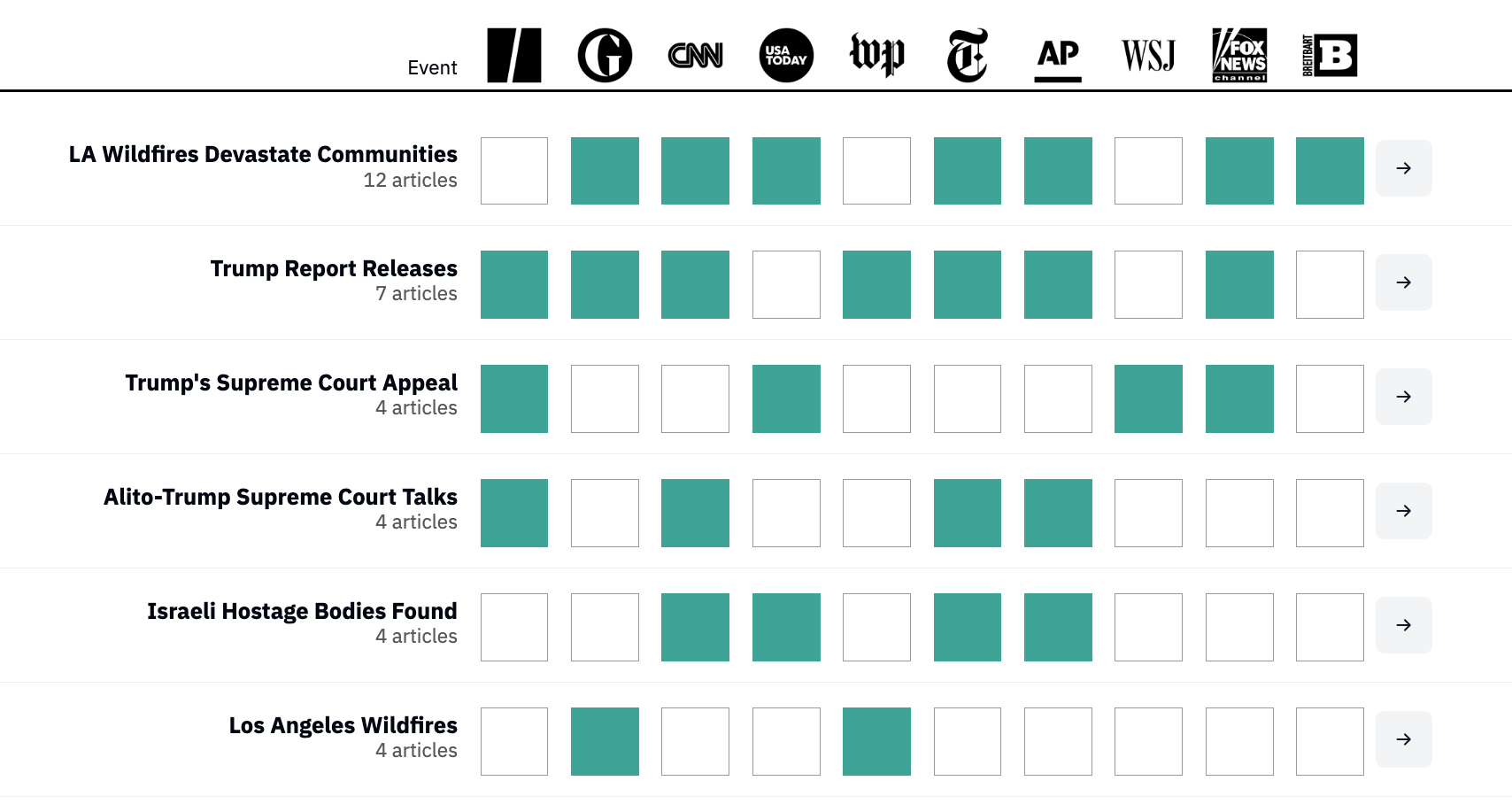
Fire-related events appeared for nine consecutive days (from January 8 to January 17) but dropped off as the media fixated on the upcoming TikTok ban and President Trump’s inauguration.
Following the inauguration, the next fire-related story to appear on the Media Bias Detector again was Wildfires and Black Altadena. This event focused on another development in the LA fires- their disproportionate impact on the historically Black community in Altadena, where many Black families had originally relocated due to discriminatory housing laws. It was covered by The Guardian, CNN, and USA Today, but was largely overlooked by other publishers, as seen on the Events page on 1/19/2025:
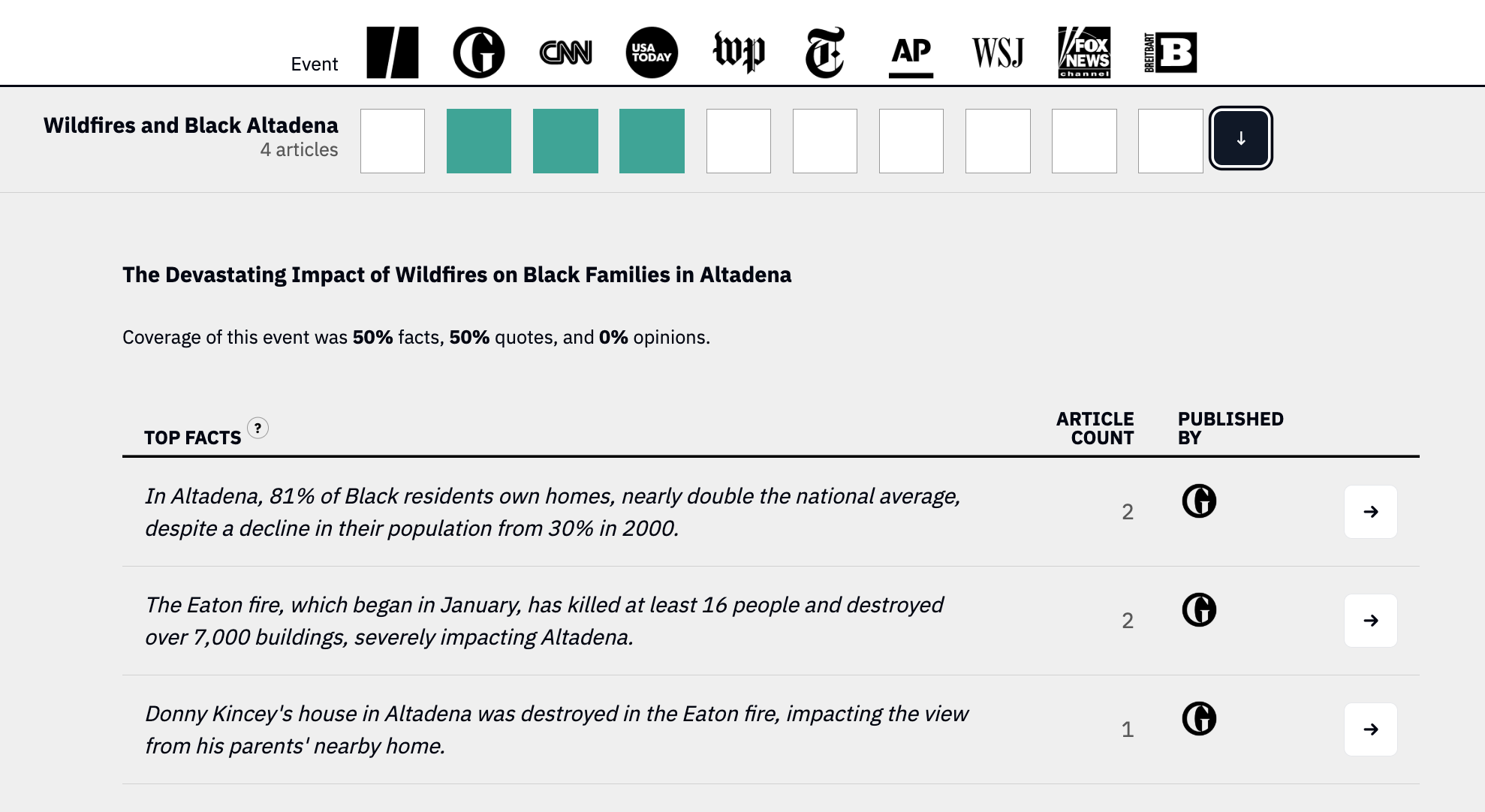
Then breaking down to individual publishers, different outlets portrayed different angles of the fires.
USA Today reports on politics and major events but they are known for their pop-culture style of reporting. On their website, several of their articles on the LA fires fell under the “Celebrities” or “Entertainment” categories. Their coverage focused largely on high-profile celebrities, how they were affected by the fires, and celebrity aid efforts.
In contrast, The Guardian focused on calls to action regarding prioritizing fire prevention, as human resources aren’t enough to mitigate large-scale fires because of climate change exacerbating the intensity and destruction of the fires.
The New York Times provided well-rounded coverage of the fire, including multiple visuals of the first 24 hours of the fire and how it progressed. It helped to capture the fire in close to real-time so that readers could better understand the scope of the fires. This detailed reporting touched on victims and the struggles by firefighters and emergency personnel to contain the fires.
Fox News talked about Trump blaming California Governor Gavin Newsom on the fires, which further fueled misinformation with additional claims that Newsom refused to sign a nonexistent “water restoration declaration.” Similarly, Breitbart blamed the fires on DEI, alluding that the scale of the fires was attributed to more funding going to DEI initiatives than firefighting resources. In reality, the LA fire department was just not equipped to fight the fire due to its unprecedented size.
The way the mainstream media talks about urban disasters is important because it shapes how we remember the disaster, and outlets showed different angles of the disaster– as in the case of the LA fires, some were more focused on the humanitarian aspect while others focused on the politics of the disaster. This results in people’s preferred news sources shaping their perceptions of the event.
